Photo

Alec Soth teaches photographic storytelling
Alec Soth leads the second online course by Magnum Photos, demonstrating the different techniques and approaches he uses in his photographic storytelling. In his first ever online course, you will follow the world-renowned visual storyteller as he navigates a range of different photographic scenarios, initiated after a random act - a dart thrown at a map.
Through an engaging curriculum of 19 in-depth video lessons you will learn about a variety of topics, from building a project to creating a photobook. Trailer:
youtube
Buy the Course:
https://learn.magnumphotos.com/course/alec-soth-photographic-storytelling/
#alec soth#magnum photos#documentary#PhotoBook#art book#fine art#learn#course#photography courses#film photography
0 notes
Photo

About the Book:
While the history of photography is a well-established canon, much less critical attention has been directed at the phenomenon of the photobook, which for many photographers is perhaps the most significant vehicle for the display of their work and the communication of their vision to a mass audience.
In the first of two volumes, both co-edited by Martin Parr and Gerry Badger, The Photobook provides a comprehensive overview of the development of the photobook: from its inception at the dawn of photography in the early nineteenth century through to the radical Japanese photobooks of the 1960s and 70s, by way of the Modernist and propaganda books of the 1930s and 40s.
The selection of photographers compiled by Badger and Parr challenges the popular canon, and their survey of the history of the photobook reveals a secret web of influence and inter-relationships between photographers and photographic movements around the world. The book is divided into a series of thematic and broadly chronological chapters; each features a general introductory text that offers background information and highlights the dominant political and artistic influences on the photobook in the relevant period, followed by more detailed discussion of the individual photobooks.
The chapter texts are followed by spreads and images from over 200 books, which provide the central means of telling the history of the photobook. Assimilated diligently by Parr and Badger, these illustrations show around 200 of the most artistically and culturally important photobooks featuring the cover or jacket and a selection of spreads. About the Author:
Martin Parr is arguably Britain's key contemporary photographer, with a unique point of view and unmistakable signature, and with a critical and popular following in the spheres of art, fashion and journalism. He has been widely published and internationally exhibited: he is very well known across Europe and becoming a major figure in the USA. Books of his photographs include Bad Weather, The Cost of Living (1991), Small World (1995), The Last Resort - Photographs of New Brighton(1997) and Think of England (2000). His first Boring Postcards book for Phaidon (1999) was a massive success, both in England and around the world.
Gerry Badger is a photo historian and critic. He regularly writes and lectures on photography and has curated a number of exhibitions. His published books include Collecting Photography (2003) and monographs on John Grossage and Stephen Shore, as well as Phaidon's 55s on Chris Killip (2001) and Eugène Atget (2001).
Buy:
https://uk.phaidon.com/store/photography/the-photobook-a-history-9780714842851/#tab-1
0 notes
Photo

INTERVIEW: TIM WILLIAMS, LECTURER AT RHOS-ON-SEA
Callum Humphreys: To date, how many books have you produced and are you currently working on a project that you intend to release in book form?
Tim Williams: Instructions for the Apocalypse. 2008. MBP, New York.
New Nowhere. Self publish dummy, 2017.
Before New. Self publish dummy, 2017.
Coastie. Self publish dummy, 2018.
Llundain. Self publish dummy, 2018.
Bad Tauts. Self publish. Edition of Fifty 2019.
CH: You have been a lecturer for 18 years. How have students’ attitudes towards books changed in those years?
TW: Book making has always been an important part of photographic practice and was taught by most of the universities (in some capacity) from the very early days of BA courses – early 70s. These were hand-made books and seen as elaborate folios as much as anything. The nuance of sequence, narrative and so forth was always there, but became far more sophisticated as the academic scrutiny of photography gained traction and theory became pivotal to interpretation. The main difference then was that a published book was reserved for the pinnacle of the industry and just to see work published in any form was an ambition for most.
On-line publishing has revolutionised photography. On the back of apple books and digital publishing access, the world of self-publishing and independent publishers has evolved. Photography has always been a technology of reproduction and the printed page has been a natural companion for many decades, but the ready access we now have has liberated photography and photographers. The consequence is that photobooks are now seen as a specific context and have a language that places an emphasis on a great deal more than a series of well-made images laid out in a particular order. Page to page relationship in a sequential context coupled to a history of design and layout in other visual arenas has given rise to something new. The photobook is now often seen as a finality and the collection of images that make it are almost subservient elements. The process of making images has changed as practitioners become more confident and familiar with book design. We are now looking for pages as well as pictures.
CH: As a photography lecturer, how important is it to you, for your students to be familiar with the ‘classics’ (The decisive moment: Henri Cartier-Bresson, Robert Frank: The Americans,etc…)?
TW: It’s the vital history of the subject of our interest. We owe it to ourselves to know.

CH: Is sequencing a cohesive set of images a lost art form due to social media and its singular view of images?
TW: Before digital technology and outside of the professional context, the photograph was mostly taken as a singular entity to record an event. It would then sit in a packet or an album and was seen by a handful of people (in its early life). The experience is now vastly different with a much greater understanding of visual language. The complexity of image relationships seems to be at the forefront of considerations for most photographers and photobook designers.
In terms of social media, we upload single images mostly, but the viewing experience is a multitude of images of all subjects in al formats. We learn and employ. The broader experience is also part of our conditioning, so that images that would traditionally not have been bedfellows now become intriguing compadre.
CH: In an age where sharing work, ideas and opinion is instantaneous, what roll do you think the photobook plays in modern photography?
TW: I think the photobook has taken on new significance as the digital arena facilitates all of the strands of production, sharing, marketing, buying and collecting - the perfect package for the medium. There is a cohesion of strands set in place over many years that have interfaced to be the phenomena that photobooks now is. Huge arena for analysis.

CH: Can narratives or ideas be shared in the same way on social media as they can in photobooks?
TW: I think social media is a fleeting presence in the same way film footage is not always easy to revisit. The idea of a book is something to be looked at again and again with each consideration revealing more complexity. In this sense, the construct does not need to be as transparent as social media equivalents. Both are interesting but books seem to be with us for much longer. I still look at books I’ve owned since the 80’s.
CH: Do you think the resurgence in the popularity of film, and its tactile nature, has played a role in keeping physical prints and books alive?
TW: Maybe – but I think that a lot of us just like to make things and film allows us to combine a raft of interests from chemistry to craft as well as fine control and artistry. The pre digital world in the age of modernity is still with us, but we also have a new technology to play with. CH: Do you have any advice for anyone who is looking to self-publish a body of work?
TW: Make them first.

CH: What are your thoughts on publishers releasing books based on the archives of popular photographers? Already, this year (Jan 2020) a new Stephen Shore book has been released and a new Eggleston book has just been announced.
TW: It’s a fine line between worthwhile material and scraping the bottom of the barrel. The mythology of genius is not easily repairable.
CH: With the sheer number of books released every month, do you worry that there is an over-saturation of photobooks?
TW: There will always be good stuff to look at and history will judge the rest.
#interview#lecturer#Photography#documentary#film phogoraphy#80s#Photobook#história#robert frank#william eggleston
0 notes
Photo

INTERVIEW: BRIAN KANAGAKI FOR: THE SOFT COPY
Callum Humphreys: Hi guys, firstly, thanks for taking the time to speak with me. Can you start by giving anyone who’s reading an overview of Soft Copy?
Brian Kanagaki: Soft Copy is a multi-artist collaborative black and white photography publication.
CH: What inspired you to start Soft Copy?
BK: I had worked in the magazine world for a few years and tried my hand at a few publishing projects but I still wanted something different out of the experience. My wife Amy and I decided to collaborate on this project together and we wanted the purpose of Soft Copy to help create a community of like minded and respected artists, and to support their work and build that community through publishing and events.
CH: I am from a design background, so I’m always interested in where peoples design inspiration comes from. When I look at the layout of the books, Im reminded of Japanese photobooks. What were your initial sources of inspiration when it came to type and layout?
BK: I'm glad that you noticed that because I am super inspired by Japanese photobooks and they were the original reference for the design of Soft Copy. After a bunch of iterations and back and forth with Amy we decided to make it less design focused and feature the images as big as possible to let the photos speak for themselves. The main idea is for the viewer to see the work from these artists and not complicate the design with anything unnecessary.

CH: You simply number each release rather than titling them. Is there an underlaying narrative or theme present in each volume, or are they simply an ambiguous sequence of complimentary images?
BK: The original concept for Soft Copy was that given enough images and contributors a narrative would start to naturally reveal itself. The very first issue was edited down from a completely random group of images from all the photographers involved and we were lucky that something really beautiful came of it. We took the same approach for the second issue but we gave the artists a little bit more guidance and direction. For the upcoming third issue we established a creative brief but still let the artists have the space to create the work that they would want to feature.
CH: I see you have recently announced Soft Copy 003, congratulations! Can you tell us a little about what we can expect?
BK: The new issue feels more focused than the previous two. Soft Copy 003 revolves around a single theme – a fictitious town. Each photographer was given the same brief and reference images but asked to interpret a different aspect of this place through a given filter. The hope was that the resulting mix of images would have a more distinct narrative while still leaving room for some unexpected surprises.

CH: In an age where sharing work, ideas and opinion is instantaneous, what roll do you think the photobook plays in modern photography?
BK: I’ve always had a passion for books and print. I come from an editorial background and studied book making in college so it’s something that has always been a part of my creative process. To me, it’s the most intimate way that you can share your work. Now more than ever, with people viewing so much content on their screens, a photobook is the largest you will ever get to view a photographer's work, unless you are fortunate enough to live in a city and have access to galleries and museums. Like I said earlier, a photobook is going to be around for a really long time, much longer than your instagram. It is a more personal, edited, and laid out body of work that the artists wants you to view and experience. The photobook is something that is that will always be necessary and something that I will always seek out.
CH: Can narratives or ideas be shared in the same way on social media as they can in photobooks?
BK: I was taught that when you sequence images into the book form that it creates something new and unexpected that wouldn't be possible in any other form. Placing images side by side creates a new meaning and new relationship that doesn’t happen online.
CH: Do you think the resurgence in the popularity of film, and its tactile nature, has played a role in keeping physical prints and books alive?
BK: I think that has something to do with it. I think people want to see and feel something real. There are so many elements of a book outside of the images on the pages. People get very excited about paper and book cloth and binding. Same with looking at a real print, it's exciting, there is nothing else like it. It’s something that can’t be captured and displayed on a screen.
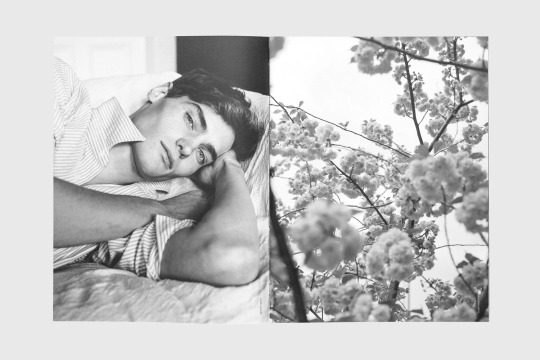
CH: Is there any advice you can give to someone who is interested in self-publishing?
BK: I think something that took me a long time to learn about publishing in general is the need for patience. The process is very slow and something that you shouldn't rush because once it’s out there you can’t change it. Take the extra time to make a dummy, work on the edit, edit it again, make another dummy, ask someone else to edit it, and save a little more money so you can make it that little bit nicer. Don’t rush.
CH: Do you have 3 book recommendations that helped shape you as a photographer / publisher, whether classics or more recent works.
BK: Three books that come to mind that helped inspire the type of imagery I wanted to make but also publish and see printed in person are: New York Arbor by Mitch Epstein, Paris in My Time, Mark Steinmetz, and Tokyo, Gerry Johansson. I think those three say a lot about the type of work and photobooks that I am interested in. Thanks to Brian for taking the time to speak to me! Looking forward to issue 003!
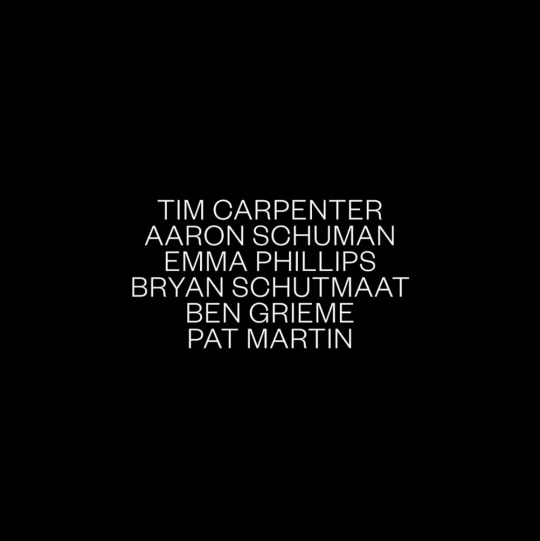
You can see more of The Soft-Copy here: the soft-copy.co
https://www.instagram.com/soft__copy/
0 notes
Photo

Photographs of British Algae: Cyanotype Impressions: 1843–53
Anna Atkins British
The first book to be photographically printed and illustrated, Photographs of British Algae was published in fascicles beginning in 1843 and is a landmark in the history of photography. Using specimens she collected herself or received from other amateur scientists, Atkins made the plates by placing wet algae directly on light-sensitized paper and exposing the paper to sunlight. In the 1840s, the study of algae was just beginning to be systematized in Britain, and Atkins based her nomenclature on William Harvey's unillustrated Manual of British Algae (1841), labeling each plate in her own hand. Although artistic expression was not her primary goal, Atkins was sensitive to the visual appeal of these "flowers of the sea" and arranged her specimens on the page in imaginative and elegant compositions. Uniting rational science with art, Photographs of British Algae is an ambitious and effective book composed entirely of cyanotypes, a process invented in 1842 by Sir John Herschel and long used by architects to duplicate their line drawings as blueprints.
0 notes
Photo
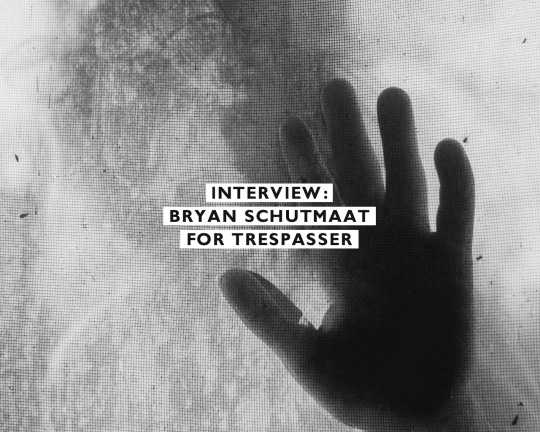
INTERVIEW: BRYAN SHUTMAAT FOR TRESPASSER
Callum Humphreys: Hi Bryan, firstly, thanks for taking the time to speak with me. Can you start by giving anyone who’s reading an overview of Trespasser?
Bryan Schutmaat: Trespasser is a small, independent art book publisher based in Austin, Texas that was founded in 2017 by Matthew Genitempo, Cody Haltom, and me, Bryan Schutmaat.
CH: What inspired you to start Trespasser?
BS: Before launching Trespasser, Matthew and I had talked for a couple years about starting an imprint together. He and I have really similar taste and passions, and we wanted to see books made that might have less of a chance to be made with established art book publishers. When the opportunity arose to publish my short book, Good Goddamn, we decided to make the imprint a reality, and we recruited Cody Haltom, a brilliant designer, to join us on the endeavour.

CH: I come from a graphic design background and one thing that instantly jumps out to me is the construction of your books. They mix DIY / zine elements like staple binding, with high-end offset printing and foil stamping. Do you think these design decisions enrich the experience or enhance the books narrative?
BS: Yes, that’s our hope. The design, materials, and all further considerations put into our books are meant to reflect the narrative, meaning, and emotional atmospheres within. As objects, we think photobooks need to honor the images and the stories we’re telling as best as possible. Regarding some of the stylistic choices you mention, Matthew and I grew up skating and listening to punk, which might account for the DIY/zine elements - maybe an outlook and aesthetic that stayed with us after youth Cody compliments that with what he brings forth in terms of layout, typography, an acute attention to detail, and so on. I think it amounts to books that feel somewhat against the grain yet don’t sacrifice great printing and overall quality.
CH: Congratulations on your newest publication ‘Polar Night’ (Mark Mahaney 2019) it seems to have been met with universal praise. Polar night, similar to many books in your back catalogue seems to touch upon themes of isolation, anxiety and the interaction we have within our landscape. This type of ‘documentary’ photography has almost become a genre in itself. Is this the kind of work you are actively seeking to publish through Trespasser?
BS: I don’t think we’re trying to push that kind of work necessarily. We’ve only collaborated with close friends on our projects so far, and perhaps the themes you notice might just be shared interests among a small friend/artist group. I like that all of our publications up to now have a sense of cohesion, but we’re also eager to branch out and tell different stories.
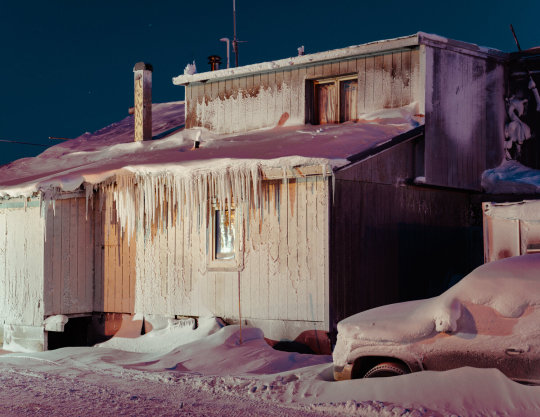
CH: In an age where sharing work, ideas and opinion is instantaneous, what role do you think the photobook plays in modern photography?
BS: I have a bit of spiel about this. I think photobooks are the saviours of photographic meaning in an era when we are constantly bombarded by the ubiquity of images and digital media. There’s a torrent of content everywhere we look, and most of it adds no significance or benefit to our lives, aside from being momentarily stimulating. They quickly disintegrate into the abyss. But a good photobook can transcend this meaninglessness and function like work of literature. A book is physical and lasting. It slows you down. It can convey profound concepts, engaging narratives, and unique points of view.
CH: Can narratives or ideas be shared in the same way on social media as they can in photobooks?
BS: No, I don’t think so. On this topic, I often reference a great video of David Lynch, which can be found on Youtube, talking about how sad it is that people think they’ve seen a film when they’ve watched it on an iPhone. “You'll think you have experienced it, but you'll be cheated,” he says, “It's such a sadness that you think you've seen a film on your fucking telephone. Get real.” I think it’s the same with photobooks. There’s no way the attributes of photobooks - their tactile characteristics, mechanics, poetic nature, etc - can be equalled on a computer screen, especially a tiny mobile device with a three-inch screen. There are some interesting ways media is evolving on bigger screens - desk/lap tops and iPads, etc - but I still think books win out every time.
CH: Do you think the resurgence in the popularity of film, and its tactile nature, has played a role in keeping physical prints and books alive?
BS: I think it goes hand in hand to some degree. These days, people spend so much of their lives in a digital world -- working, communicating, shopping, banking, etc -- that I think a part of us yearns for something tangible. To me, this explains why photographic film is resurging, as well as music on vinyl, photobooks, and other things analog. Digital tech has conquered a lot of our lives, but for some people, maintaining a relationship with physical objects has value.

CH: Is there any advice you can give to someone who is interested in publishing a long-term body of work in book form - For example, knowing when to draw a line in the sand and consider it ‘finished’ (if there is such a thing)?
BS: It’s important to keep in mind that great photos are what make great photobooks, so it’s crucial for photographers to put their energy into their body of work foremost. The photobook is the reward for the work after completion.
The question about when to consider a project finished was recently asked of me in the recent released Aperture book, Photo Work, edited by Sasha Wolf. I hope you won’t mind if I recycle that answer: “What’s the cliché? A work of art is never finished, only abandoned. With the kind of work I do, I could shoot forever, trying to improve the photos or tweak the edit or just fuck with things endlessly. But life is short, and at some point you have to say, ‘Ok, this is enough.’ If you feel the subject matter isn’t thoroughly explored after the completion of a project, then you can always go shoot the same kind of stuff in the future.”
CH: Do you have 3 book recommendations that helped shape you as a photographer, whether classics or more recent works.
BS: It’s so obvious, but The Americans by Robert Frank is the godfather of photobooks and sort of touches everything that comes after it, so it has shaped me without question. Truck Stop by Marc F Wise is a much lesser known book, but I came across early on and it helped to ignited my interest in everyday America and the subject matter I came to shoot. Laura McPhee’s River of No Return is a book I fell in love with early on as well, and it probably shaped my vision in untold ways in terms of its content and the sensitive, poetic way she conveys her subjects.
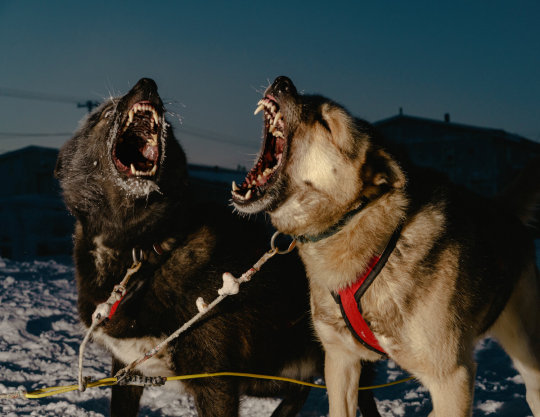
That said, I like these books because of the astonishing photos inside, not necessarily because of what the books are themselves as aesthetic objects. I think a new standard has been set in recent years in regard to design and physical characteristics of photobooks, so if I were to choose books that have shaped me as a publisher, it would be a different selection.
CH: Thanks for taking the time to speak with me, is there anything else you would like the readers to know about Trespasser?
BS: We don’t do a newsletter at this time or have much of an online presence outside Instagram, so that’s the best way to keep up with us, @trespasserbooks.
See more of trespassers work here:https://www.instagram.com/trespasserbooks/
Bryan Shutmaat here: https://www.instagram.com/bryanschutmaat/?hl=en
youtube
#bryan schutmaat#david lynch#film photography#Photography#documentaryphotography#Photobook#interview#trespasser#poler night#fine art
3 notes
·
View notes
Photo

INTERVIEW: JASON KOXVOLD
Callum Humphreys: Hi Jason, firstly, thanks for taking the time to speak to me. Can you give everyone reading a little background on yourself and the kind of work you make?
Jason Koxvold: I’ve been making photographs in a fairly specific group of long-term projects, focused on how culture intersects with economic and military power, for the last 14 years.
CH: In 2016 you founded Gnomic Book, could you please tell me a little about the press and what inspired you to start it?
JK: I tend to work quite quickly, and I find certain aspects of the publishing world to be quite frustrating. My background is in design and print, so when I wanted to publish KNIVES, it made sense to do it myself. From there I discovered that I really enjoyed working with other artists, and so Gnomic Book became an actual imprint. Today we’ve made I think ten or eleven books; some are quite traditional, while some of the smaller editions are extremely experimental.

CH: In the age of social media, where sharing work and ideas is instantaneous, what role do you think the traditional photobook plays in modern photography?
JK: A photobook can be, on its face, any number of things. For me the format represents an opportunity to make an object that is greater than the sum of its parts: when the design complements the photographs; when the material choices complement the design; when you can use text or other media to support or contradict the work. The photobook becomes quite different to, say, the same work presented in a gallery, or on a web site. The way you interact with the book changes over time; its permanence gives the reader an opportunity to revisit the work under different contexts. All of this is starkly in opposition to the way we experience photography in social media.
CH: Do you think narratives or ideas can be shared in the same way on social media as they can in a book?
JK: I do not.

CH: In terms of your own work, I know you have already published a number of books. Do you know when starting a project that the final outcome will eventually be presented as a physical book?
JK: I certainly imagine that it might, but I’ve definitely started projects that fail, for whatever reason. The process of making a book, for me and many of the artists that I work with, can be quite rigorous, and sometimes the work cannot sustain the weight of the process.

CH: When sequencing a book and creating a narrative which connects people and the landscape they inhabit, do you ever feel like an author writing a novel or director making a film?
JK: That’s a nice analogy. Because my work is never strictly documentary, I enjoy the opportunity to use disparate images to shape specific narratives – and often these narratives rely on the readers’assumptions and biases to do the heavy lifting.
CH: What sources of inspiration do you look for outside of photography, and are there certain types of storytelling you are drawn to?
JK: Obviously each medium has its own strengths and limitations; I’m drawn to film and writing, and there is a growing amount of interactive sculpture or experiential work that I’m developing to accompany a forthcoming project about war and capitalism. I tend towards storytelling that relies upon the reader or viewer to work to discover it — which is, not coincidentally, one of the key tenets of Gnomic Book.

CH: Can you remember the one photobook early in your photographic education which made you realise that you wanted to share your work and ideas in a similar way?
JK: To answer that question a little differently - most of the photobooks I saw early on didn’t really spark much interest; there’s a tendency for many artists to approach the book as something to check off a list, with nearly no thought given to sequencing, design, or materials. It wasn’t until I started to collaborate with Dutch printers that I started to really enjoy the possibility of what a photobook could be. One of those books is (in matters of) Karl, by Annette Behrens.
CH: Lastly, if you could only pack three photobooks to take with you on a long journey, what would they be?
JK: (in matters of) Karl, by Annette Behrens
One Wall a Web, by Stanley Wolukau-Wanambwa
Edges of the Experiment by Marie-José Jongerius
Check out more of Jasons work on his website:
https://koxvold.co
0 notes
Photo
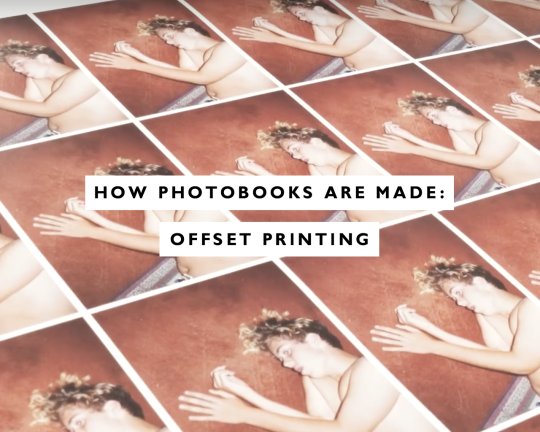
A simple breakdown of how the offset printing process works
youtube
#negative feedback#offset#Photobook#photo book#Photography#documentaryphotography#graphic design#editorial design
0 notes
Photo
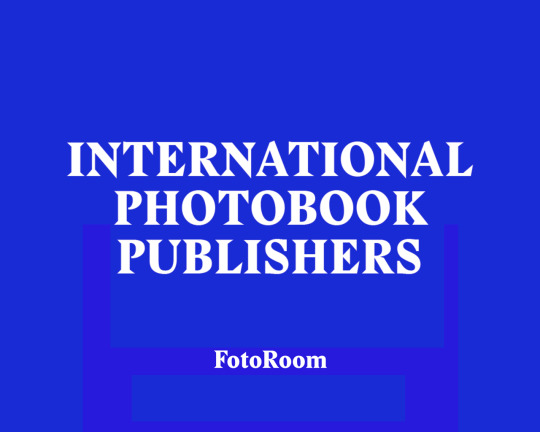
Follow the link for a huge list of international book publishers:
https://fotoroom.co/international-photobook-publishers/
0 notes
Photo

(Photo Cred: Alec Soth, 2019)
Bestselling Photobooks of 2019
The Bestselling Photobooks of 2019 at
Photobookstore
were as follows:
1. I Know How Furiously Your Heart Is Beating by Alec Soth
2. The Pillar by Stephen Gill
3. Polar Night by Mark Mahaney
4. The Coast by Sohrab Hura
5. Carnival by Mark Steinmetz

6. Scene by Alex Majoli
7. Positive Disintegration by Tania Franco Klein
8. Farewell Photography by Daido Moriyama
9. A Hunter by Daido Moriyama
10. Southwestern by Niall McDiarmid
11. Omaha Sketchbook by Gregory Halpern
12. House Hunting by Todd Hido

]13. Jasper by Matthew Genitempo

14. Principio Erat by Bill Henson
15. Provoke: Complete Reprint of 3 Volumes by Various
16. Dirty Scenes by Katrien de Blauwer
17. By The Sea by Markéta Luskačová
18. Good Morning, America (Vol.1) by Mark Power

19. Approximate Joy by Christopher Anderson
20. Set of Matter Zines by Daisuke Yokota
0 notes
Photo
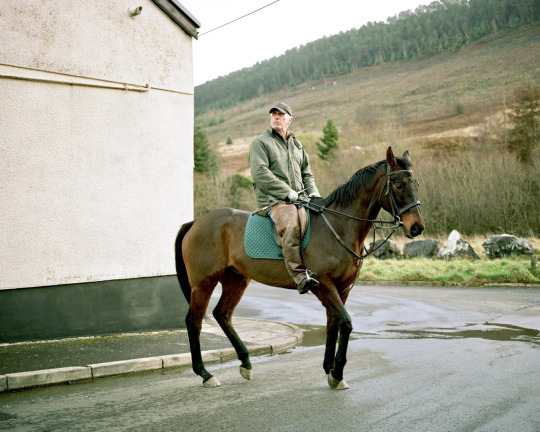
INTERVIEW: DAN WOOD
Callum Humphreys: Hi Dan, firstly, thanks for taking the time to speak to me. Can you give everyone reading a little background on yourself and the work you make?
Dan Wood: I’m a self-taught photographer from Bridgend in South Wales. I’ve been shooting seriously for 25 years and came to photography via the skateboarding culture, which I was very much a part of here in South Wales for many years.
CH: In an age where sharing work and ideas is instantaneous, what roll do you think the traditional photobook plays in modern photography?
DW: It’s extremely important and has became an art form in itself. In the age of digital everything it’s vital that books exist; something tangible that can be held and looked at away from the phone/computer screen. Another important aspect is that people should continue to support books and buy whenever possible as they are not only an incredible source of inspiration but also keep the industry cogs turning, so books will continue to be made and the small profits can help the photographer to continue making work.
CH: From following your social media accounts, I would imagine you own a small library of photobooks by now haha! I know personally I have found some great recommendations from your posts on Instagram tagged #photobookjousting. What is it about the photobook that interests you so much?
DW: I’m quite materialistic and always enjoy being surrounded by items I like, but apart from that, and as mentioned above, I find photobooks a great source of inspiration - they keep the fire burning in my belly! It often surprises me that quite a lot of photographers don’t realise the power of photobooks and are constantly buying new cameras or lenses to try and get through their creative block. These types need educating on the importance of photobooks; hence the hashtag #buybooksnotgear !
CH: Do you think narratives or ideas can be shared in the same way on social media as they can in a book?
DW: To a certain extent, yes, but there really is nothing like sitting down with an actual physical photobook and watching the story unfold through every page turn. Photobooks are usually of excellent quality these days and a lot of expense goes into making them and that’s why they are usually about £30 or £40. The profits are minimal but to put something so special and of such quality out into the world is very rewarding.
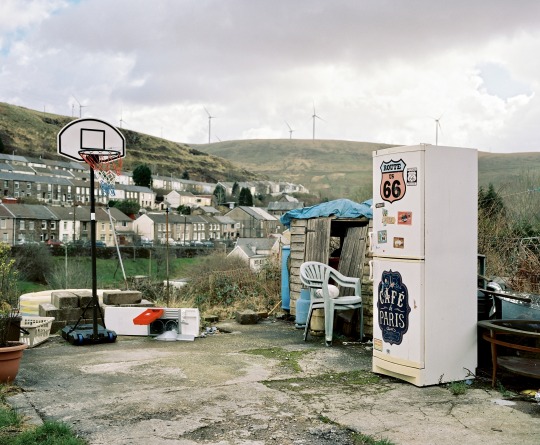
CH: Do you think the resurgence in the popularity of film, and its tactile nature, has played a role in keeping physical prints and books alive?
DW: Definitely! I’ve been a film shooter for 25 years and there was a time when I was starting to get very worried about how much longer film would be around for, so it’s a huge relief. The only downside is that film has doubled in price over the last 10 years, but i’m prepared to take that on the chin. Prints, exhibitions and books are all thriving at this moment in time and it’s how photography should be - there’s a real buzz in the photo-world and I’m enjoying it immensely.
CH: In terms of your own work, I know you have already made a number of books. Do you know when starting a project that the final outcome will eventually be presented as a physical book?
DW: I fell into the book game by accident and I used to make work with the end result focused on exhibitions as as opposed to books - being published or self-publishing didn’t even cross my mind in the early days. It was an email, completely out of the blue, from Iain Sarjeant (Another Place press) where it all began - he was about to start a small any publishing company and wanted to publish Suicide Machine as their second release. These days I do have books in mind when shooting work, particularly long term projects as I like to draw a line under them when they are finished and, I feel, a book does just that.
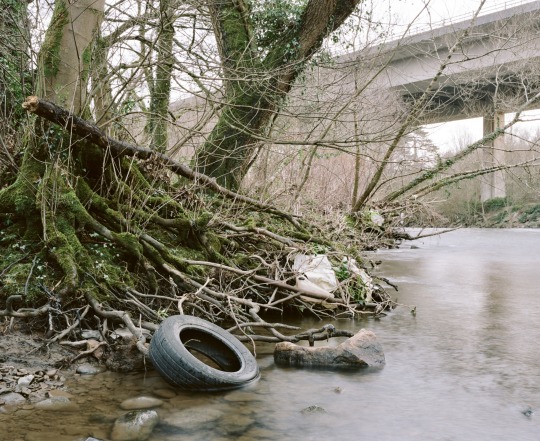
CH: Can you remember the one photobook early on which made you realise that you wanted to share your work or ideas in a similar way?
DW: I can’t think of a definitive book that made me want to make books but I do know the book which pretty much changed everything and put me on the documentary photography path: Exiles by Josef Koudelka. I took it out of the University library (circa 1997) and It was that moment that I decided that they were the type of pictures I wanted to make - I was blown away.
CH: I understand you are working on a new body of work. Are you aiming to publish this like your past works and, can you share any details on the concept?
DW: The new work, which is about my local river and links the 2 former projects, Suicide Machine and Gap in the Hedge, will be Published by Another Place Press in late 2020. The project pays tribute to the Ogmore River, an unremarkable river that once ran black with coal dust. The series will touch on Wales’ industrial past as well as modern day environmental issues but also include personal memories of my childhood growing up with the river. I’m 1 year into making the project and aim for another year before completion - the work has been kept fairly secretive thus far and progress is only available to view on my website using a password.

CH: You have been working with ‘Another Place Press’ for some time now and have released a number of books with them. What is it like working with APP, is it a collaborative effort?
DW: I’ve been very fortunate to cross paths with Iain (Sarjeant) and have built up a strong, real life, friendship over the years - even though were are around 700 miles apart! We make an effort to get together once or twice a year, purely for social reasons, but when it comes down to the nitty gritty of book production, yes, it absolutely is a collaborative effort. When publishing a book, 2 people are definitely better than one and Iain really knows his stuff, he is a graphic designer by trade and that helps enormously with the actual book design etc. So when working with a publisher be prepared to make compromises as the publisher will spot things that you may think was a good idea, but in his/her eyes its a bad one - and its usually the publisher that knows best!
CH: Lastly, let’s say you are tired of the modern word (and hearing about Brexit!) and decide to move to a desert island. You have enough space to pack 3 photobooks… what are they?
DW: Ooh, this is a tough one *goes of to look at bookshelf* Gregory Haplern - ZZYZX; Bryan Schutmaat - Grays the Mountain Sends; Karolina Paatos - American Cowboy (I’m a huge fan of Americana)
You can see more of Dan Woods work on his instagram: https://www.instagram.com/danwoodphoto
1 note
·
View note